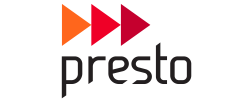Content
If you are cutting checks for your bills you want to make sure to print checks from QuickBooks. This will automatically feed the payment information into your QuickBooks file, thus reducing unnecessary data entry. With everyone that goes into keeping your books up to speed, it might make sense to hire a qualified and accredited finance professional to help you. A controllable cost report gives you an idea of where the company spends its money, which potentially affects how much it will earn or if money is being lost.
They’re the behind-the-scenes daily task performers that keep front-of-house operations running smoothly and in line with the company’s overall mission. Each of these numbers need to be accounted for when running your restaurant. You’ll be in a better place to determine the financial health of restaurant if you keep track of them. Your restaurant variable expenses are highly volatile and can change easily from one month to another. Documented reporting and screening of these costs is integral to keeping the business afloat.
What Is Entailed in Restaurant Operations?
Select a POS system that is user-friendly for employees and customers and that integrates with your accounting software. TouchBistro is an iPad-based POS system built by restaurant owners for restaurant owners. The company’s primary goals are to make managing your restaurant easier, make more money, and deliver a positive experience to your customers.

Most of the money coming into a restaurant is from dining room, bar, and carry-out transactions. Restaurants often have many different suppliers, bills, and employees to pay. Profit and loss margins for a restaurant are determined by balancing the sales and payouts figures. Many business owners outsource accounting procedures to companies specializing in restaurant bookkeeping. Choosing accounting systems for restaurants can help you eliminate the difficulty with restaurant accounting and help you manage your food costs easily. These systems include financial software and point of sale systems to help you organize inventory count and execute transactions quickly. Keeping track of your revenue is important to restaurant bookkeeping.
Evaluate Inventory Costs
Keeping on top of your bookkeeping is worth far more than avoiding tax season headaches. The more transparency you have into the key performance indicators that monitor the health of your restaurant, the more swiftly you can take decisive action to remedy wounds.
Why Do Restaurants Need Accounting Software?
Restaurant owners typically handle accounting in one of three ways: they do it themselves manually, use a bookkeeper or accountant, or use accounting software. Unless you have a strong accounting background, keeping a restaurant’s books manually isn’t usually a good idea. A small restaurant with one location and an owner-operator with very few employees may be able to get away with keeping track of their own records and meeting with an accountant quarterly.
However, restaurants, food trucks, and catering businesses are generally better served by using accounting software. This software saves owners a lot of time and money. It helps them meet certain tax deadlines, calculate and pay sales tax, and meet payroll compliance guidelines. Accounting software for restaurants also automates bank reconciliation, processes payroll, automates sales tax payments, creates invoices, and keeps track of inventory.
The success of restaurant accounting relies on the availability of information. The more information you have, the more accurate your account will be. You need to ensure that the information presents the true financial position of the business, and can be used for decision making. Watch your sales.Day-to-day sales can impact other parts of your restaurant like inventory and payroll. Record all of your sales on a day to day basis to make reporting easier for later. Depending on your restaurant’s financial situation, you may or may not have a choice when it comes to the accounting method.
Gross Profit
New and experienced restaurant owners can use it, whether they’re beginners or experts at accounting and bookkeeping. It can also be integrated with payroll companies or QuickBooks for those who need more thorough accounting services. He started in the dish pit and worked his way up to management, where he helped several restaurant owners cut their costs, effectively manage their staff, and fine tune their operations. When it comes to restaurant accounting, the chart of accounts categorizes the money you spend and receive. The chart of accounts records high-level transactions like revenue, expenses, assets, liabilities,cost of goods sold, and equity. Each of these buckets is further categorized into smaller ones, such as meat costs, alcohol costs, staff wages, marketing, utilities, laundry, etc. We recommend monitoring prime costs on a weekly basis to track fluctuations in expenses and identify areas where you can cut unnecessary costs.
- While accounting involves interpreting and analyzing data, bookkeeping only focus on recording.
- Underestimating your weekly income could make it look like your business is losing money when it’s not.
- Features that are especially useful for restaurants include inventory management, payroll, and bill management.
- As a business owner, you are at major risk by doing your own payroll.
- Restaurant accounting is the process of interpreting and analyzing the revenue, cash flow, inventory, and income statements of a restaurant.
Implementing accounting software can help you and your accountant stay on the same page. The ideal accounting software for restaurants should provide advanced reporting features, be easy to use, and allow you to track and access your data from anywhere at any time. With the many moving pieces involved in a restaurant, a seamless accounting process can be difficult. Add the unique features of the restaurant industry, from short-lived inventory to payroll including wages and tips, and bookkeeping becomes a fast-changing, time-consuming challenge. However, being able to easily access sales, inventory, and labor data allows you to quickly make informed decisions. To keep up with bookkeeping, many restaurant owners are turning torestaurant accounting softwaredesigned to organize and automate common bookkeeping tasks. There are many independent accountants and accounting firms that specialize in restaurant bookkeeping.
Tim is a Certified QuickBooks Time Pro, QuickBooks ProAdvisor for both the Online and Desktop products, as well as a CPA with 25 years of experience. He most recently spent two years as the accountant at a commercial roofing company utilizing QuickBooks Desktop to compile financials, job cost, and run payroll. Depending on the needs of your restaurant and the number of bills that you process, there’s a variety of A/P software programs that may be able to assist you. The best ones must have strong general A/P features, such as purchase order tracking and vendor payment tracking. Good A/P automation should also reduce data entry and streamline the A/P process. You’ll also want to triple-check that taxable items reflect the correct state and local sales tax so that you collect the correct amount from customers.
- Your first month with DAVO is free, and then it’s $49.99 per month per location.
- Calculating your cost of labor can also help you see where you may need to make changes, such as implementingrestaurant scheduling software or investing in more staff training.
- Track your consumables and supplies to calculate the value of the food you have in stock and determine the average daily inventory costs.
Your P&L statement reflects the sales and costs of your restaurant during a given time period. The P&L reconciles items such as sales, food and labor costs, operating expenses, and your profits. The next step of your restaurant bookkeeping process should be to set up accounts payable. Keeping your vendors happy will be important if you want them to continue to do business with you. Bookkeeping services mostly handle the paperwork off site, which can reduce internal theft. Accounting companies are generally in direct communication with the owner and much less likely to manipulate numbers without any access to cash. A restaurant manager may have reason to change sales figures in a manual ledger to cover missing cash.
Restaurants have KPIs, reports, and business and tax structures that are unique to the restaurant industry. Not all https://www.bookstime.com/ industries have to deal with tips, weekly reporting periods, and hyper-sensitive labor and inventory metrics.
To better understand restaurant bookkeeping, read these restaurant account tips and suggestions, and get on the way to being as successful as you imagined. Entering revenue transactions into an accounting system, as well as recording your expenses can be tiresome, that’s why it’s always better to automate. Even if you use a POS system, the payments might come in from different sources, such as Stripe, PayPal or Square. To ease up the process of recording all transactions, you can enhance your QuickBooks experience with expert cloud-based solutions for small businesses, such as Synder.
